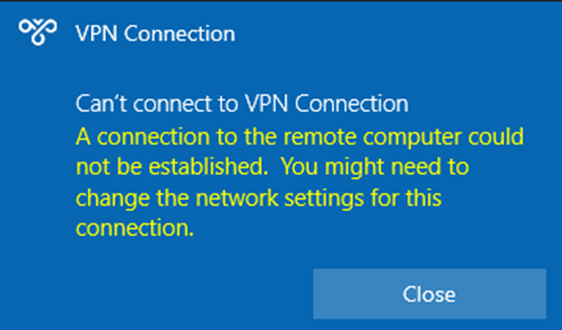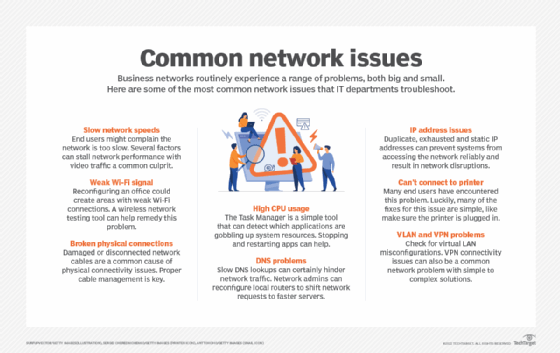Featured
Table of Contents
How To Fix A Vpn Not Working On Your Iphone Or Ipad

The Routing and Remote Access snap-in lives within the Microsoft Management Console, understood as the MMC. There are several ways to access the MMC. You can pick the console from the Start menu's Programs alternatives, within the Administrative Tools folder within Windows server's Control board or by typing mmc at a command timely.
As Tech, Republic's Brandon Vigliarolo demonstrates within his video at the start of this post, the Providers console shows the status of the Routing and Remote Access entry. From within the Solutions console and with the Routing and Remote Gain access to entry highlighted, you can click Start the Service or right-click the entry and choose Restart.
In some cases the VPN client and VPN server are set to using various authentication methods. Verify whether an authentication mistake is the problem by opening the server console. Yet another approach of accessing the MMC is to type Control+R to open a command prompt in which you can type mmc and hit Go into or click OK.
If the entry isn't present, click File, choose Add/Remove Snap-in, pick the Routing and Remote Access alternative from the options and click Add, then OK. With the Routing and Remote Access snap-in added, right-click on the VPN server and click Characteristics. Then, examine the Security tab to verify the authentication approach.
Fix Vpn Not Working Problems And Issues In Windows 11/10
Make sure the VPN client is set to the authentication approach defined within the Security tab. Normally the items just reviewed are accountable for many VPN connection refusal errors. Other fundamentals need to be correct, too. For example, if the Windows Server hosting the VPN hasn't signed up with the Windows domain, the server will be unable to verify logins.
Each Web-based VPN connection generally utilizes two various IP addresses for the VPN client computer. This is the IP address that's utilized to establish the preliminary TCP/IP connection to the VPN server over the Web.

This IP address normally has the same subnet as the regional network and hence permits the customer to interact with the local network. When you established the VPN server, you should configure a DHCP server to appoint addresses to customers, or you can produce a bank of IP addresses to appoint to clients directly from the VPN server.

:max_bytes(150000):strip_icc()/vpn-D3Damon-5782a3675f9b5831b5cdd2c3.jpg)
If this choice is selected and the efficient remote access policy is set to enable remote access, the user will be able to connect to the VPN. Although I have been not able to re-create the situation personally, I have heard reports that a bug exists in older Windows servers that can cause the connection to be accepted even if the effective remote access policy is set to deny a user's connection.
11 Vpn Troubleshooting Tips: Quick & Easy Fixes In 2023

Another typical VPN problem is that a connection is effectively developed but the remote user is unable to access the network beyond the VPN server. By far, the most typical reason for this problem is that approval hasn't been granted for the user to access the whole network. To permit a user to access the whole network, go to the Routing and Remote Gain access to console and right-click on the VPN server that's having the problem.
At the top of the IP tab is an Enable IP Routing check box. If this check box is made it possible for, VPN users will be able to access the remainder of the network, presuming network firewalls and security-as-a-service settings permit. If the checkbox is not chosen, these users will be able to gain access to only the VPN server, but nothing beyond.
For instance, if a user is dialing directly into the VPN server, it's usually best to set up a static path in between the customer and the server. You can set up a static path by going to the Dial In tab of the user's homes sheet in Active Directory Users and Computers and choosing the Apply A Static Route check box.
Click the Add Route button and after that enter the destination IP address and network mask in the area supplied. The metric should be left at 1. If you're utilizing a DHCP server to appoint IP addresses to clients, there are a number of other issues that could cause users not to be able to go beyond the VPN server.
Vpn Troubleshooting Guide
If the DHCP server assigns the user an IP address that is currently in usage elsewhere on the network, Windows will detect the dispute and avoid the user from accessing the rest of the network. Another typical issue is the user not getting an address at all. Many of the time, if the DHCP server can't designate the user an IP address, the connection will not make it this far.
If the client is designated an address in a range that's not present within the system's routing tables, the user will be not able to browse the network beyond the VPN server. Ensure the resources the user is attempting to gain access to are really on the network to which the user is connecting.
A VPN connection to the other subnet might, in truth, be required. A firewall or security as a service solution might likewise be to blame, so don't forget to examine those services' settings, if such components exist between the VPN server and the resources the user looks for to reach.
The very first possibility is that one or more of the routers involved is performing IP packet filtering. I suggest examining the client, the server and any makers in between for IP package filters.
Table of Contents
Latest Posts
The Best Vpn Services For Business (Including Small ...
Business Vpn: What Is It And Which One Should You Consider?
9 Best Business Vpns For Work In 2023 - Teambuilding
More
Latest Posts
The Best Vpn Services For Business (Including Small ...
Business Vpn: What Is It And Which One Should You Consider?
9 Best Business Vpns For Work In 2023 - Teambuilding